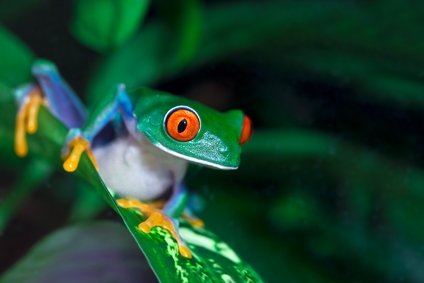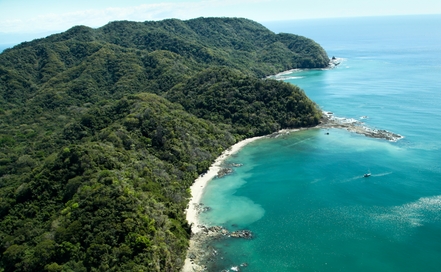Background
 Costa Rica is located in Central America. The Spanish culture has always had a heavy influence on the culture of Costa Rica. The official language of this country is Spanish, and it is spoken throughout the country. English, Creole, and Indian languages are also spoken there as well. The culture of Costa Rica leans toward taking a more indirect path when speaking to one another, so creative speaking and listening techniques are required at times; most probably a form of respect.
Costa Rica is located in Central America. The Spanish culture has always had a heavy influence on the culture of Costa Rica. The official language of this country is Spanish, and it is spoken throughout the country. English, Creole, and Indian languages are also spoken there as well. The culture of Costa Rica leans toward taking a more indirect path when speaking to one another, so creative speaking and listening techniques are required at times; most probably a form of respect.
Evidence of human occupation in Costa Rica dates back to 10,000 years; although, we also know that Christopher Columbus landed in this beautiful country. The Spaniard Gil Gonzalez Davila named the country Costa Rica, which stands for Rich Coast. Although the Spaniards colonized this area, they mostly focused on taking riches and gold from other places such as Mexico and Peru. In this way, they spared Costa Rica from huge damage.
In 1821, Central Americans and Costa Ricans rebelled against the Spaniards. In 1824, the first head of state, Juan Mora Fernandez, was elected. Many coffee barons were established under his rule, but then the barons became powerful and overthrew presidents along the way. Eventually General Tomas Guardia seized control and he put in place some of the better reform systems for that country. In 1948, civil war erupted but was quickly squelched by an exile named Jose Maria Figueres Ferrer. He went on to become one of the most influential leaders for Costa Rica and many civil rights were realized by its citizens through his rule.
Authors and Literature in Costa Rica
 The roots of Costa Rican literature have a foundation in colonization. Costa Rican literature is traced back to European influence. Costa Rica is a beautiful country and it has many artistic people within its borders. They vary from song writers, to writers, to film makers and are influenced by the Costa Rican culture, arts, and landscapes. Due to the natural surroundings of beauty, this setting allows for writers to become secluded and concentrate on their writings.
The roots of Costa Rican literature have a foundation in colonization. Costa Rican literature is traced back to European influence. Costa Rica is a beautiful country and it has many artistic people within its borders. They vary from song writers, to writers, to film makers and are influenced by the Costa Rican culture, arts, and landscapes. Due to the natural surroundings of beauty, this setting allows for writers to become secluded and concentrate on their writings.
One of the first authors to come from this place was Manuel Arguello Mora. He was born in 1834 and studied in both Costa Rica and Guatemala. Being left an orphan at a young age, he was brought up by an uncle named Juan Rafael Mora Porras. Juan Rafael later became President of Costa Rica.
In 1856, Manuel later wrote his first historical novel titled La Trinchera, which portrays his uncle’s campaign against William Walker and Nicaraquan forces. His uncle was eventually deposed as president and the family moved to Europe. Manuel Mora and his uncle both eventually returned to Costa Rica; however, this proved to be a fatal mistake for the uncle. Manuel was spared a firing squad unlike his uncle (Juan Rafael). Manuel Mora eventually founded the newspaper La Reforma, but then died in 1902.
Another important writer for Costa Rica was Joaquin Garcia Monge. He was born in 1881 and died in 1958. He was educated both in Costa Rica and in Chile and was influenced by the literary works of that time. As he headed Costa Rica’s Biblioteca Nacional (Library) he had great influence into the education system and process. He is mostly known for his short novel El Moto published in 1900.
During the mid 1900s, there were many other authors that came to the forefront. One of them is named Carlos Luis Fallas. He became a novelist at age sixteen. He participated in organizing the banana workers strikes. He worked as a banana loader and was not pleased with the work conditions. His most famous novel is Mamita Yunai. It speaks about the harsh conditions on the banana plantations. In 1944 he was elected to congress, and in 1966 won the literature prize “Magon.”
Another well known artist is Carmen Lyra. She was a popular fairytale writer. She studied elementary teaching in Europe. When she came back to Costa Rica she ran the Escuela Maternal. She then went on to achieve the first ever title of professor in the Children’s Literature department at the University of Costa Rica. In addition, a children’s library in Costa Rica is named after her.
Carmen Naranjo is also a famous writer and poetess from this country. Along with being an avid writer, she was also an ambassador for Costa Rica in Israel. Another achievement of Carmen Naranjo is that she was also an administrative manager at the Institute of Social Insurance. As a minister of culture, she eventually ended up being the manager for the Museum of Costa Rican art. Her writings have also been translated into different languages and she was one of the earliest writers to lay criticism on the fruit companies and their dominance in this business.
There are so many well known authors, both historical and modern, that it would be such a great feat to list them all. However, here are just a few of them: Dorelia Barahona, Alfonso Chase, Fabian Dobles, Aquileo Echeverria, Carlos Gagini, Rafael Angel Herra, Max Jimenez, and Julieta Pinto.
Today, Costa Rica has many laws and protections for owners of intellectual rights. This makes it fairly easy to publish in this country. Costa Rica is one of the countries that follow the rules of the World Trade Organization so that is a plus. If you are a writer of any kind, Costa Rican law will protect your rights. Your literary work does not have to be registered for protection. As soon as you begin writing your first chapter or piece, it is protected and safe from those looking to steal your writing.




